Fue un hermoso día hoy en el área de la bahía., Entonces me dirigí a Napa y al Pope Valley. Estaba explorando un territorio nuevo para una pequeña polilla de flores, Heliolonche Celeris, que aparentemente está esperando que surja un clima agradable más contiguo. Esta temporada ha sido un poco tardía debido a todo el frío y la lluvia., Pero tengo la esperanza de una visita de regreso exitosa en unas semanas. Sin embargo, Me encontré con un puñado de hermosos microleps. Todas estas polillas están en el género Adela y familia Adelidae (o algunos dirían Incurvariidae). Se conocen comúnmente como “polillas de hadas” porque parecen bailar sobre parches de flores – que aparentemente las hadas les encanta hacer. Parecía que los machos estaban defendiendo un área pequeña., con dos a tres a la vez, girando alrededor de cada uno unas pocas pulgadas por encima de las flores. Supongo que estos bailes fueron territoriales porque no se observó apareamiento. Mientras que las hembras tienen antenas largas, Los machos lo llevan al exceso. Recolecté una buena serie pero yo todavía no he clavado la especie – Cuantos ves? Afortunadamente, todo el Adelidae estaban cubiertos en un 1969 Documento de Jerry Powell, ¿Quién también vive por la calle de mí?.
Después de mirar a través de las colecciones aquí en el CAS, y leyendo la monografía, Parece que la mayoría de estos son Adela Trígrapha. Es un Adélido común del área de la Bahía de San Francisco y la mayoría de los rangos costeros de CA. Se observa que la variación es considerable, con bandas rotas e ininterrumpidas, así como la variación del rojo en la corona. El otro Adelid está fácilmente identificado para adela flammeusella.
Adela Trígrapha Zeller 1875
(Más imágenes después del descanso)
Adela Trígrapha Zeller 1875
adela flammeusella Cámaras 1876
Adela Trígrapha Zeller 1875
Adela Trígrapha Zeller 1875
Adela Trígrapha Zeller 1875
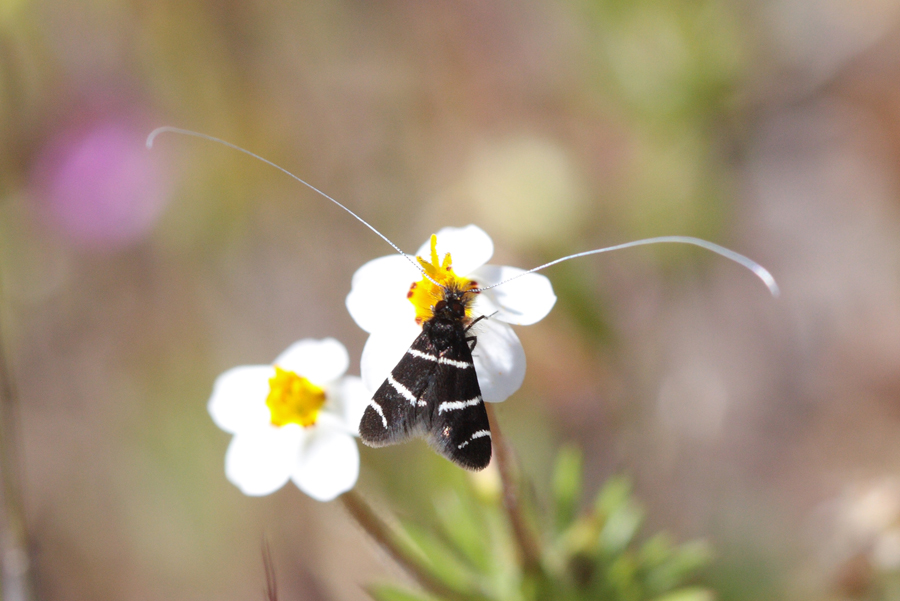
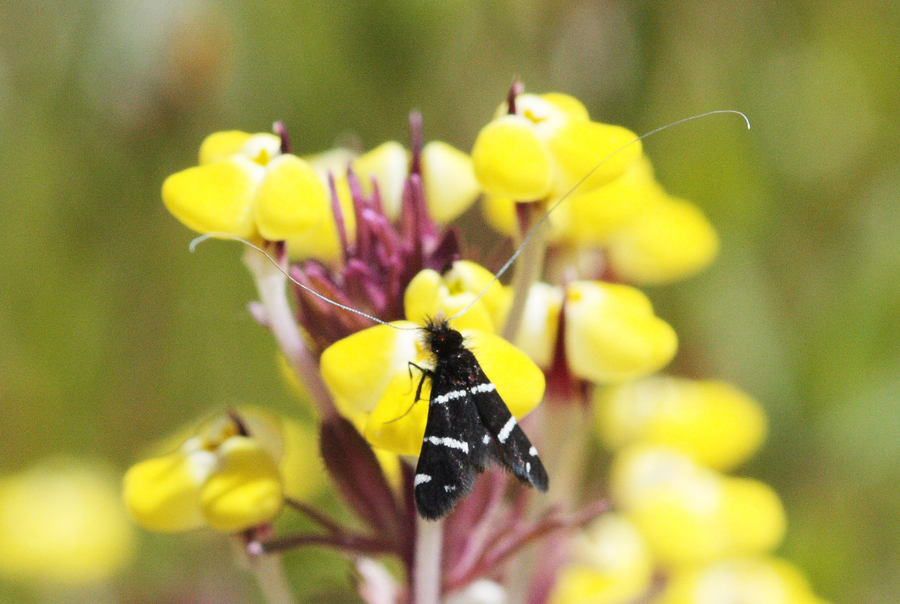
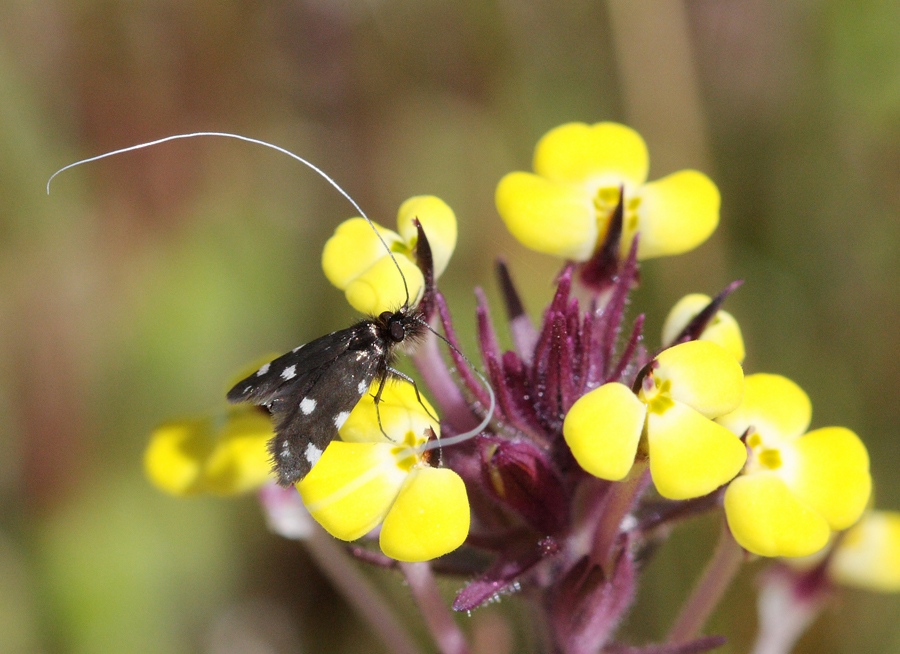
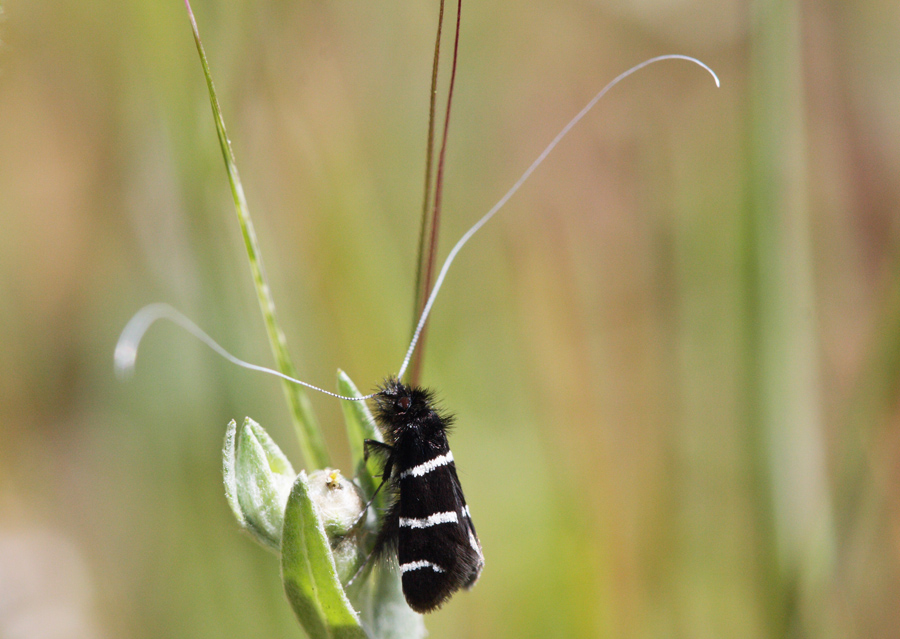
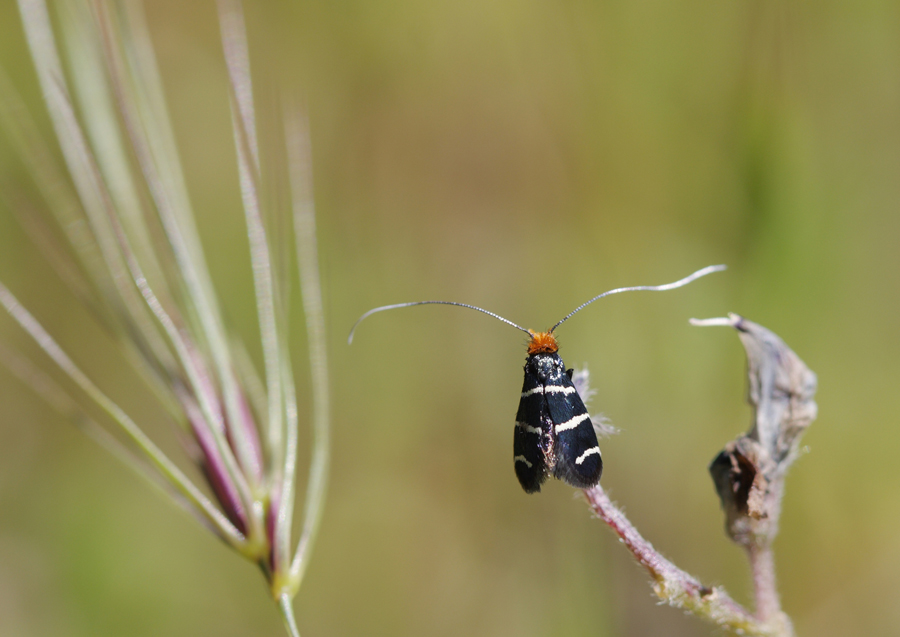
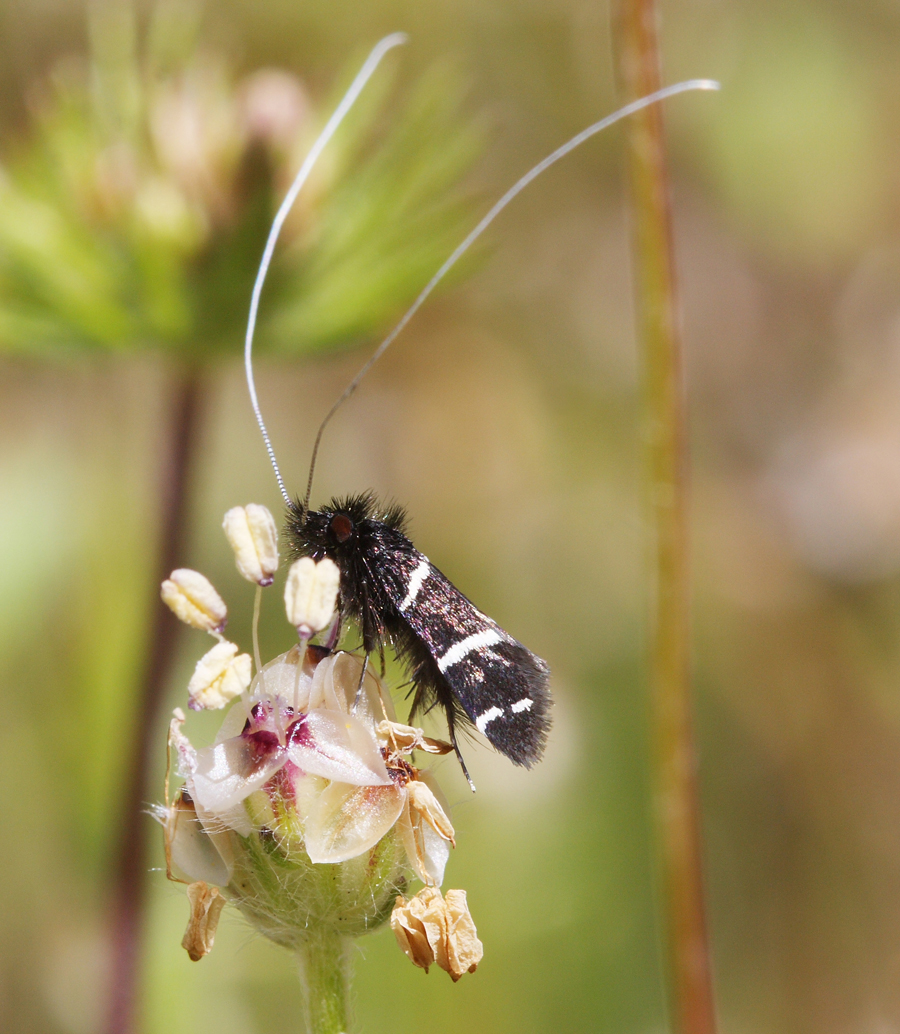

Must be at least three species – what about the one with the orange head? The markings are like those in photos 1 y 4, but the antennae don’t look as long and I’m wondering if this is sexual dichroism.
I hung out with a moth guy in my early days, who introduced me to “Incurvariidae.” They’re quite small as I recall – must be quite a challenge to mount.
Chris
Very unusual moth. To me it looks like a stag horn moth. How big is the wing span?
Yes I’m thinking 3 as well. I thought dimorphism at first too, but reading Powell it sounds like there are 2 species that are both supposed to have orange on the head to varying degrees. Sin mencionar, they shouldn’t overlap in range. It’s the ones without the orange that are more puzzling! I’ll just have to go over to Berkeley and have Jerry put names on them.
I kind of cheat by mounting my micros upside down – and I’m trying to illustrate exactly how I do it so I can add it to the techniques section.
And as far as micros go these guys are big! About 12mm wing tip to wing tip.
I love these little moths!…used to see them often while hiking along the coastal trails at Pt Reyes, on Calochortus tolmei.
Not which species though, perhaps you can put a name to it?
http://bobabela.com/California-Nature/Insects-Spiders/7263324_oXTZd#466874794_R7RiX
Updated, looks like they are all the same. Bob – your moth would also be A. trigrapha.
Ah, so two species rather than three – the post apical band can be complete or broken, but what about the orange head?
Gracias Chris.
It’s still confusing. Males have the orange, which varies considerably. There is still a chance some of these are Adela eldorata, which more commonly has a bright orange crown. I’ll still have Powell sort these specimens out and tell me the verdict.
All the monograph says in regards to the red on A. trigrapha is “… and a few to several orange scales at the back of the crown.” No note on dimorphism.
[…] Grinter, at The Skeptical Moth, goes moth tasting in the Napa Valley and photographically samples some intoxicating vintages of Adelidae fairy […]
[…] Adela Trígrapha (Moth Tasting in Napa) […]
[…] since I saw Chris Grinter’s beautiful photographs, I have wanted to see (and possibly photograph) the tiny little moths known as fairy moths (family […]